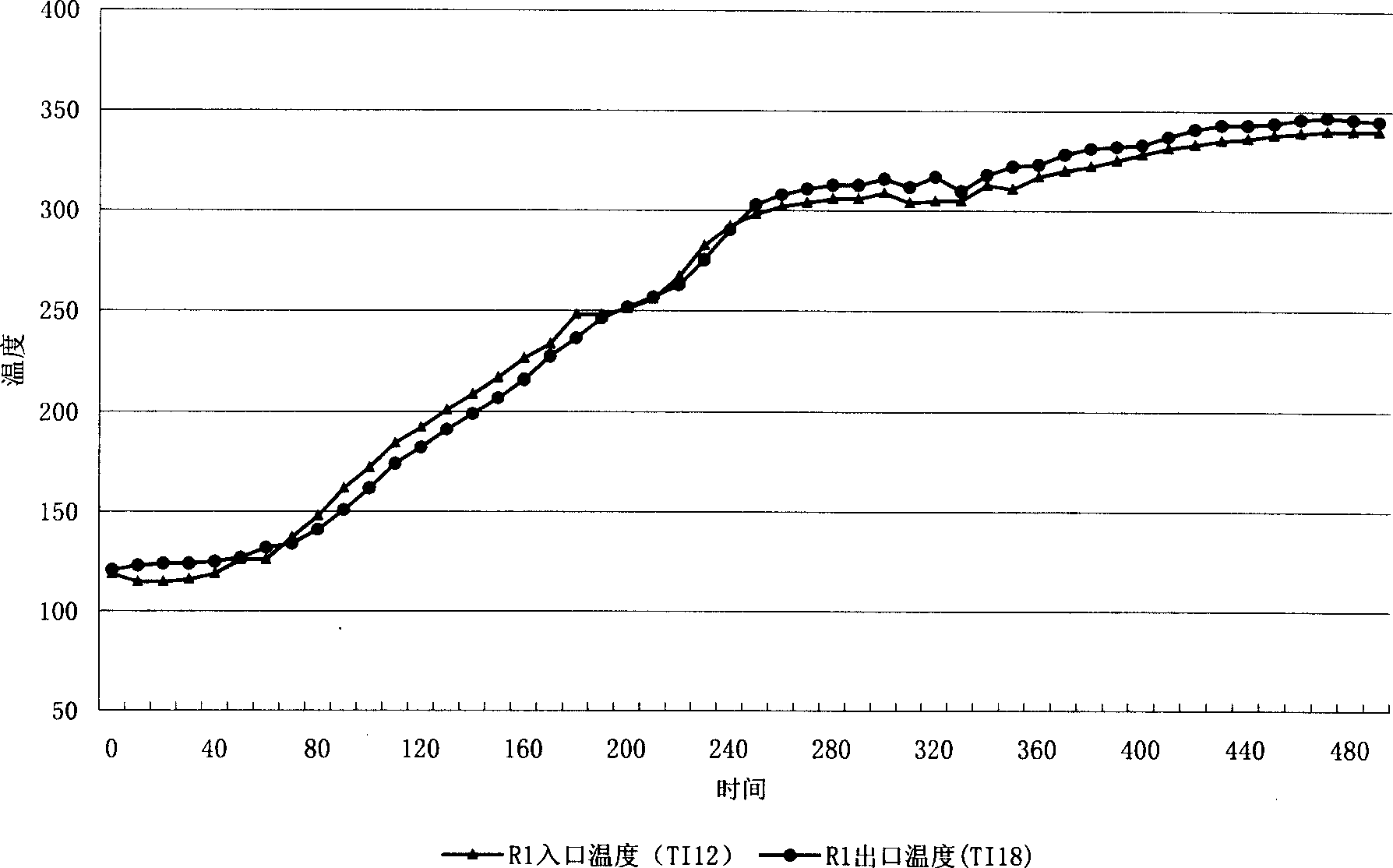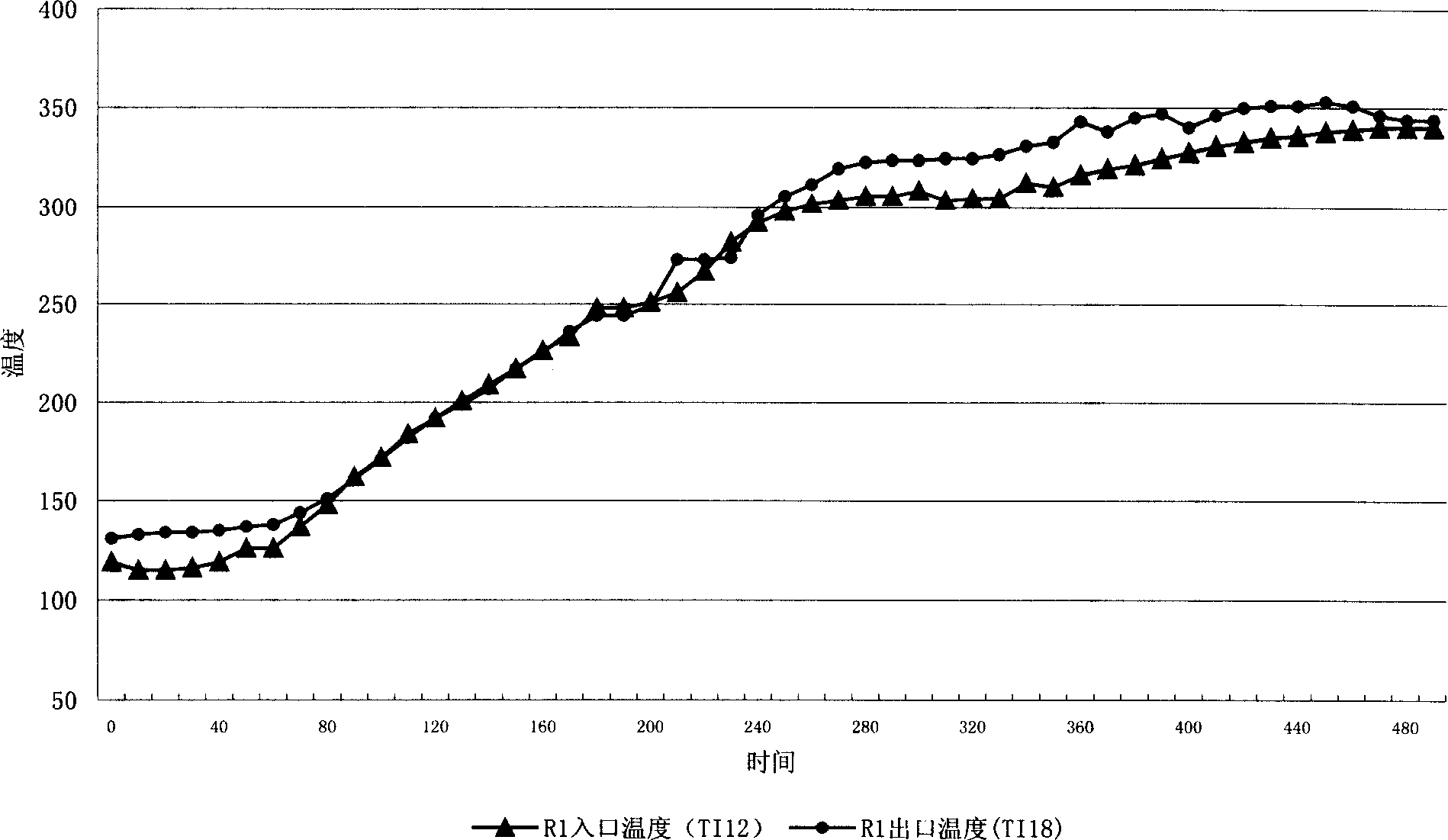Treatment method before application of hydrogenation catalyst
A hydrogenation catalyst and treatment method technology, which is applied in chemical instruments and methods, catalyst activation/preparation, physical/chemical process catalysts, etc., can solve the problem of self-heating of sulfided catalysts, and reduce the self-heating of catalysts. To achieve the effect of being beneficial to activation and application, slowing down the phenomenon of concentrated heat release, and alleviating the effect of concentrated heat release
- Summary
- Abstract
- Description
- Claims
- Application Information
AI Technical Summary
Problems solved by technology
Method used
Image
Examples
Embodiment 1
[0026] The commercial hydrodesulfurization catalyst FH-5A (developed by Fushun Petrochemical Research Institute and produced by Wenzhou Huahua Group Co., Ltd.) was selected. The main composition and properties are shown in Table 1.
[0027] The specific pre-sulfurization process is as follows:
[0028] 1. The molten elemental sulfur is introduced into the oxidation state catalyst, and the amount of elemental sulfur introduced is 105% of the theoretical sulfur requirement of the catalyst. It was then impregnated with a coker diesel fraction in an amount of 45% by weight of the catalyst.
[0029] 2. The catalyst obtained in step 1 was treated at normal pressure, nitrogen flow atmosphere (nitrogen gas volume 25L / L catalyst hour), 150°C for 4 hours, and 260°C for 2 hours to obtain the final hydrorefining catalyst EPRES containing sulfide -1.
Embodiment 2
[0031] The catalyst in the oxidation state is the same as in Example 1, which is FH-5A.
[0032] The specific pre-sulfurization process is as follows:
[0033] 1. Uniformly impregnate triethylamine on the oxidized FH-5A catalyst, and the addition amount of triethylamine is 5% of the catalyst weight to obtain a catalyst loaded with triethylamine.
[0034] 2. Dispersing the elemental sulfur in a solvent with a volume ratio of catalytic cracking gasoline and rapeseed oil of 8:1, the amount of solvent is 15% of the catalyst weight, and the amount of elemental sulfur is 105% of the theoretical sulfur content of the catalyst containing metal. The catalyst loaded with triethylamine obtained in step 1 was spray-impregnated with a solvent of elemental sulfur.
[0035] 3. The catalyst obtained in step 2 was treated at normal pressure, in a stagnant air atmosphere, at 160° C. for 2 hours, and at 230° C. for 4, to obtain the final hydrotreating catalyst EPRES-2 containing a sulfurizing a...
Embodiment 3
[0039] The catalyst in the oxidation state is the same as in Example 1, which is FH-5A.
[0040] The specific pre-sulfurization process is as follows:
[0041] 1. Dissolve triethylamine and gluconic acid in 4:1 by weight ratio in ammonia water containing 8wt% ammonia, impregnate the oxidized catalyst with the solution, the amount of the above substances is 15% of the catalyst weight, and then dry at 130°C for 4 hours, a catalyst containing mixed organic additives was obtained.
[0042] 2, vacuum distillate oil and peanut oil volume ratio are 1: 2 miscible solvent, solvent consumption is 0.5% of catalyst weight, then mixes with elemental sulfur solid powder, and elemental sulfur consumption is 90% of catalyst metal-containing theoretical sulfur requirement.
[0043] 3. The material obtained in step 2 was treated at 110° C. for 15 hours and 160° C. for 10 hours at normal pressure and in a stagnant air atmosphere to obtain the final hydrotreating catalyst EPRES-3 containing a su...
PUM
 Login to View More
Login to View More Abstract
Description
Claims
Application Information
 Login to View More
Login to View More - R&D
- Intellectual Property
- Life Sciences
- Materials
- Tech Scout
- Unparalleled Data Quality
- Higher Quality Content
- 60% Fewer Hallucinations
Browse by: Latest US Patents, China's latest patents, Technical Efficacy Thesaurus, Application Domain, Technology Topic, Popular Technical Reports.
© 2025 PatSnap. All rights reserved.Legal|Privacy policy|Modern Slavery Act Transparency Statement|Sitemap|About US| Contact US: help@patsnap.com


